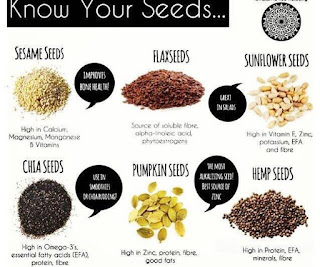Bristol Stool Chart
Here's a insight from the Bristol Stool Form scale about the different types of stools
Type 1 - Very constipated. Typical for post-antibiotic treatments and for people attempting fiber-free (low-carb) diets. Need to increase water and fiber intake.
Type 2 - Organic constipation - A person experiencing these stools is most likely to suffer from irritable bowel syndrome because of continuous pressure of large stools on the intestinal walls. Adding supplemental fiber to expel these stools is dangerous, because the expanded fiber has no place to go, and may cause hernia, obstruction, or perforation of the small and large intestine alike.
Type 3 - suggests that the defecations are regular. Straining is required due to latent constipation
Type 4 - is normal for someone defecating once daily.
Type 5 - It is typical for a person who has stools twice or three times daily, after major meals.
Type 6 - It is borderline normal as it may be difficult to control the urge, especially when you don‘t have immediate access to a bathroom. It can also indicate a hypersensitive personality prone to stress, too many spices, drinking water with a high mineral content.
Type 7 - This of course, is diarrhea
The Perfect Stool:
One complete elimination in the morning
A brown color
A banana shape
Does not stick to the toilet
Easy to wipe – no mess
Minimal odor
Almost always the same regardless of foods eaten
Imbalanced Stool:
Mucus in the stool (looks like cobwebs wrapping around poop)
Green or yellow stool (not from eating excess green veggies)
Black stool
Greasy or shiny stool
Clay-colored stools
Blood in the stool
Undigested food in the stool
What is regular, anyway?
WebMD says: “Depending on your diet, age, and daily activity, regularity can mean anything from three bowel movements a day to three each week.”
However, there’s more to good bowel function than just being regular. For example, you should be able to:
Pass a bowel motion within about a minute of sitting down on the toilet. (The bowel usually wants to empty about 30 minutes after a meal (commonly breakfast), but this can vary from person to person.)
Pass a bowel motion easily and without pain – ideally, you shouldn’t be straining on the toilet or struggling to pass a bowel motion which is hard and dry.
Complete evacuation of your bowel- you don’t have to go back to the toilet soon after — to pass more.
What color is the perfect poop?
Brown is best! You knew that, though, right? Some other colors you may see: red, green, yellow, white, and black.
All of these other colors (barring the consumption of foods or medications that would cause a temporary shift, such as beets) could be indicative of something going on in the body that needs to be addressed. Here are some possibilities:
Red could mean lower GI bleeding.
Green could mean Crohn’s Disease.
Yellow could mean gallbladder trouble or parasites.
White could mean liver disease or pancreatic trouble.
Black could mean upper GI bleeding.
12 Tips to Get the Perfect Poop:
1. Chew your food! Shoot for 27 chews per bite, it should be a paste before swallowing.
2. Eat until you are 80% full. Overeating is a massive burden on the digestive system.
3. Remove all sources of gluten from your diet (the most common sources are wheat, barley, rye, spelt and other grains)
4. Eat a diet that includes whole foods, rich in fresh, organic vegetables and fruits that provide good nutrients and fiber; most of your fiber should come from vegetables, not from grains
5. Avoid artificial sweeteners, excess sugar (especially fructose), chemical additives, MSG, excessive amounts of caffeine, and processed foods, as they are all detrimental to your gastrointestinal (and immune) function
6. Boost your intestinal flora by adding naturally fermented foods into your diet, such as sauerkraut, pickles, and kefir (if you tolerate dairy); add a probiotic supplement if you suspect you’re not getting enough beneficial bacteria from your diet alone
7. Try increasing your fiber intake; good options include psyllium and freshly ground organic flax seed (shoot for 50 grams of fiber per 1,000 calories consumed).
8. Make sure you stay well hydrated with fresh, pure water
9. Get plenty of exercise daily. Get a Rebounder (mini trampoline) and bounce for 5-10 minutes daily!
10. Avoid pharmaceutical drugs, such as pain killers that will slow your bowel function. Antidepressants and antibiotics can cause a variety of GI disruptions.
11. Address emotional challenges with tools like EFT, journaling and therapy.
12. Consider squatting instead of sitting to move your bowels. Squatting straightens your rectum, relaxes your puborectalis muscle and encourages the complete emptying of your bowel without straining, and has been scientifically shown to relieve constipation and hemorrhoids. I highly recommend using a Squatty Potty Toilet Stool!
Well there you have it. Inspect your poops daily and use them as an indicator of your overall health and how well you are treating your body!





